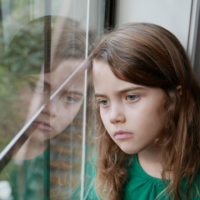Self-harm is an increasingly recognised phenomenon and one of the strongest predictors of suicide, which continues to be one of the leading causes of death in young people world-wide. Self-harm can take many forms and may present with or without suicidal intent and both in the context of mental disorder, and without.
Self-harm & Suicide
-

Online self-harm content might provide peer support to young people
Youth today find themselves living in an era of social media, with easy access to a wide range of social networking sites. Unfortunately, emerging evidence suggests that some social technologies might cause more harm than good to some young people’s mental health.1,2
Read more -

Self-harm in a time of isolation: What is the evidence to support mobile and internet-based psychological interventions for self-harm?
In this blog we summarise the findings and implications of a recent systematic review of studies evaluating the effectiveness and acceptability of mobile- and internet-based psychological interventions for self-harm in adolescents and adults.
Read more -

Do cybervictimization and face-to-face victimization affect suicide ideation risk in the same way?
Data from a new study published in the JCPP suggests that cybervictimization is an important risk factor for concurrent, serious suicidal ideation/attempt throughout adolescence.
Read more -

A history of abuse increases the risk of suicide attempts in youth
Researchers in Belgium and the USA have conducted one of the first investigations into whether a history of various forms of abuse and the presence of mood disorders and psychotic symptoms can predict suicide attempts in psychiatrically hospitalized children.
Read more -

Is neurocognitive functioning linked to a family history of a suicide attempt?
Jones et al. matched 501 participants (aged 8-21 years) who had a family history of a suicide attempt with ~3,000 participants with no such family history.
Read more -

Who can best support young people who self-harm?
A new study published in Child and Adolescent Mental Health has investigated what forms of support young people who self-harm find helpful.
Read more -

DBT-A can enhance emotion regulation in ethnic minority youth
Ethnic minority youth often experience environmental and culturally relevant stressors, putting them at risk of developing self-regulation difficulties and engaging in self-harm.
Read more -

Suicidal ideation in children: is it written all over their face?
A study recently published in the JCPP, has investigated how suicidal thoughts might develop in childhood, focusing on the parent–child relationship.
Read more -

In Conversation… Dr Bernadka Dubicka
Bernadka discusses the IMPACT study, the use of technology among children and young people, including the positives and negatives of social media. Includes transcription, and links.
Read more -

Dr. Patricia M. Crittenden – ‘Psychological Trauma & Resilience: A Strengths Perspective’
Dr. Patricia M. Crittenden gives her lecture on ‘Psychological Trauma & Resilience: A Strengths Perspective’. ACAMH members can now receive a CPD certificate for watching this recorded lecture. Simply email membership@acamh.org with the day and time you watch it, so we can check the analytics, and we’ll email you your certificate.
Read more
